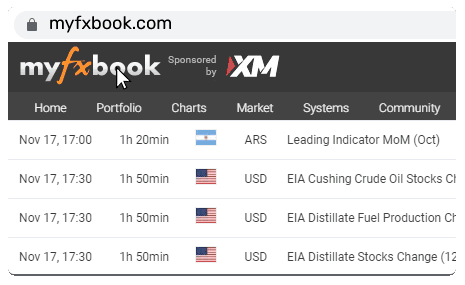- Início
- Comunidade
- Geral
- patterns or chart formations in sideway
Advertisement
Edit Your Comment
patterns or chart formations in sideway
Membro Desde Mar 16, 2023
53 postagens
Jun 06, 2023 at 23:10
Membro Desde Mar 16, 2023
53 postagens
hi friend in fx book
do you think that there are any patterns or chart formations that are commonly observed in sideway markets?
do you think that there are any patterns or chart formations that are commonly observed in sideway markets?
Membro Desde Jan 25, 2022
89 postagens
Jun 07, 2023 at 06:02
Membro Desde Jan 25, 2022
89 postagens
The game of money is usually reflected by the charts, and it is inevitable that the charts are reacted by the structure.
Membro Desde May 01, 2017
12 postagens
Jun 07, 2023 at 10:51
Membro Desde May 01, 2017
12 postagens
Reversal patterns like bullish / bearish hammer and engulfing candles are winners IMHO
Membro Desde Jun 08, 2023
8 postagens
Jun 09, 2023 at 12:41
Membro Desde Jun 08, 2023
8 postagens
Hi NathanialChen! Ah, sideways markets, the bane of many traders' existence. But hey, even in those choppy waters, there are still patterns and chart formations that we can keep an eye out for. Here are a couple of commonly observed ones:
The Rectangle Pattern: This is a classic pattern you'll often spot in sideways markets. It's characterized by two parallel horizontal lines that act as support and resistance levels. Price tends to bounce between these lines, creating a range-bound market. Traders look for opportunities to buy near the support line and sell near the resistance line until a breakout occurs.
The Triangle Pattern: Triangles can also form in sideways markets. You might come across symmetrical triangles, where the price forms higher lows and lower highs, creating converging trendlines. These patterns suggest a period of consolidation and indecision. Traders often wait for a breakout above or below the triangle to take a directional trade.
Double Tops and Bottoms: Although commonly associated with reversals, double tops and bottoms can also appear in sideways markets. They occur when price tests a resistance or support level twice, creating a horizontal line. Traders keep an eye out for these patterns as a potential indication of a range-bound market, offering opportunities to trade within the established range.
Bollinger Bands Squeeze: When a sideways market is in play, Bollinger Bands tend to narrow, indicating decreasing volatility. This "squeeze" can be a sign that a breakout may be on the horizon. Traders keep a close watch for a break above or below the bands as a potential entry signal.
Remember, these patterns and formations aren't foolproof, and sideways markets can be frustrating. It's essential to wait for confirmation, manage risk effectively, and be prepared for false breakouts. Combine these chart patterns with other technical indicators and your trading strategy to increase your odds of success.
Trading sideways markets requires patience and discipline. Sometimes it's better to sit on the sidelines and wait for a clear trend to emerge. But hey, when life gives you lemons, squeeze them and make some pips!
Keep exploring, stay adaptable, and may your trades be as smooth as a calm sea!
The Rectangle Pattern: This is a classic pattern you'll often spot in sideways markets. It's characterized by two parallel horizontal lines that act as support and resistance levels. Price tends to bounce between these lines, creating a range-bound market. Traders look for opportunities to buy near the support line and sell near the resistance line until a breakout occurs.
The Triangle Pattern: Triangles can also form in sideways markets. You might come across symmetrical triangles, where the price forms higher lows and lower highs, creating converging trendlines. These patterns suggest a period of consolidation and indecision. Traders often wait for a breakout above or below the triangle to take a directional trade.
Double Tops and Bottoms: Although commonly associated with reversals, double tops and bottoms can also appear in sideways markets. They occur when price tests a resistance or support level twice, creating a horizontal line. Traders keep an eye out for these patterns as a potential indication of a range-bound market, offering opportunities to trade within the established range.
Bollinger Bands Squeeze: When a sideways market is in play, Bollinger Bands tend to narrow, indicating decreasing volatility. This "squeeze" can be a sign that a breakout may be on the horizon. Traders keep a close watch for a break above or below the bands as a potential entry signal.
Remember, these patterns and formations aren't foolproof, and sideways markets can be frustrating. It's essential to wait for confirmation, manage risk effectively, and be prepared for false breakouts. Combine these chart patterns with other technical indicators and your trading strategy to increase your odds of success.
Trading sideways markets requires patience and discipline. Sometimes it's better to sit on the sidelines and wait for a clear trend to emerge. But hey, when life gives you lemons, squeeze them and make some pips!
Keep exploring, stay adaptable, and may your trades be as smooth as a calm sea!

*Não serão tolerados uso comercial ou spam. O não cumprimento desta regra poderá resultar na exclusão da conta.
Dica: Ao adicionar uma URL de imagem/youtube, você estará automaticamente incorporando-a à sua postagem!
Dica: Digite o símbolo @ para que o nome de um usuário que participe desta discussão seja completado automaticamente.













